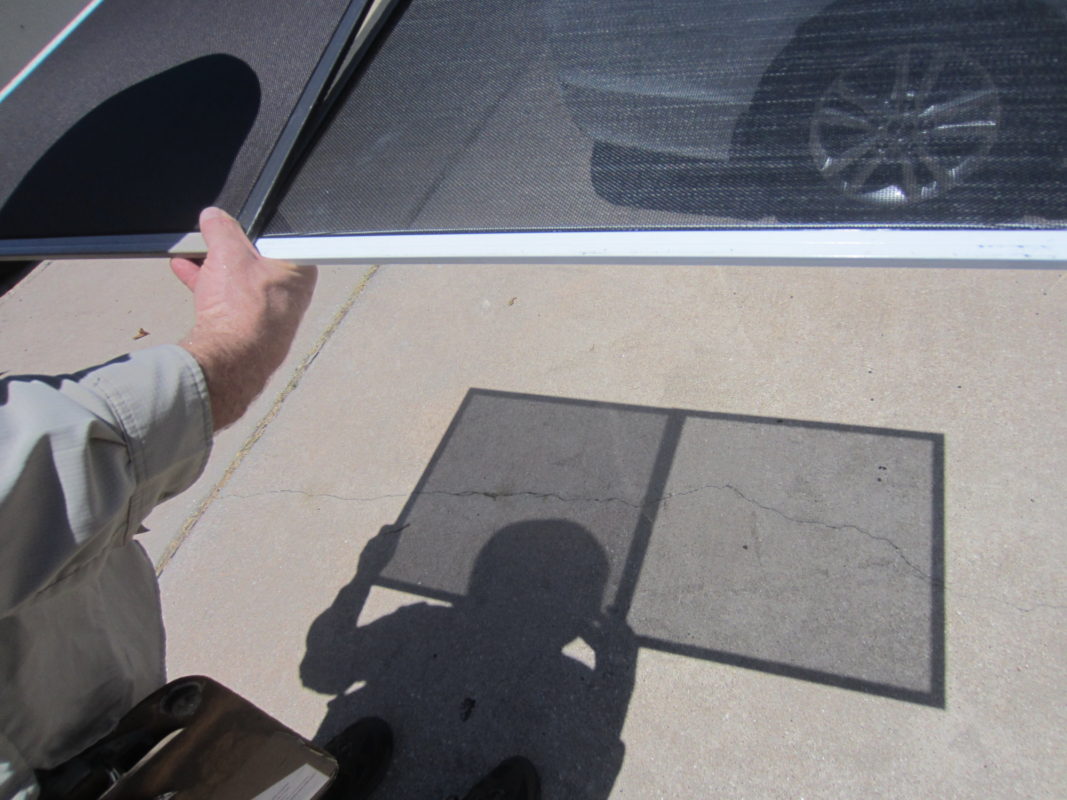80% solar screens are an ideal shading level. 80% solar screens provide a nice amount of shade. However, if you are needing more shade, the most shade that you can get, that’s our 90% solar screens. 90% solar screens are the highest density solar screens available. The highest density external solar window screen fabric.
Looking out the 80% solar screens is not too terribly different than looking out your current bug screens. Outward visibility for the 80% solar screens is outstanding.
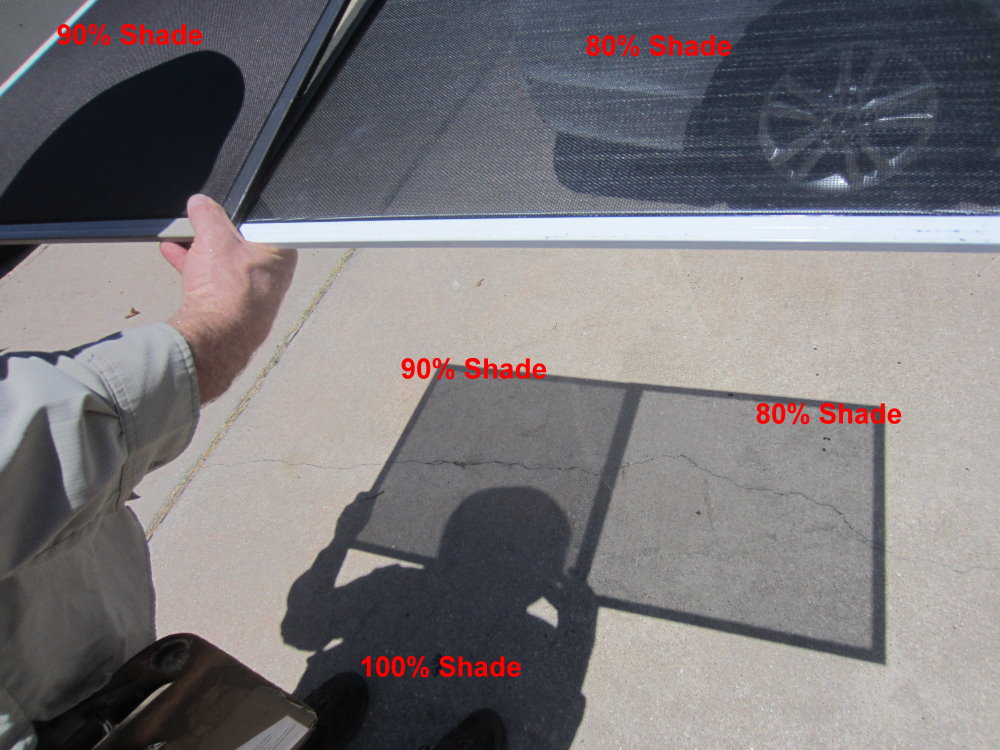
As you can see by this picture, you see what it’s like to not have any shade. 0% shade. And then to have three shading options. 80% shade, 90% percent shade, and 100% shade.
We can install on your home both 80% and 90% solar screens.
It is our recommendation to use the 80% shade solar screens for windows see less than 4 hours of Sun. And to use the 90% solar screens for all other windows. Using 90% solar screens for Windows that get beaten hard by the Sun. The windows that get pounded by the Sun. 90% solar screens for Windows that get four hours or more of the sun intense rays.
The 80% solar screens provide a great amount of shade for all the rest of the windows.
Visibility Inward and outward during the day. And at night for both 80% solar screens and 90% solar screens.
Neither shade densities of solar screens provide evening privacy. Solar screens provide great privacy during but not at night.
As you can see by the following picture, it shows an 80% and 90% solar screen. 80% and 90% solar screen looking in at night.
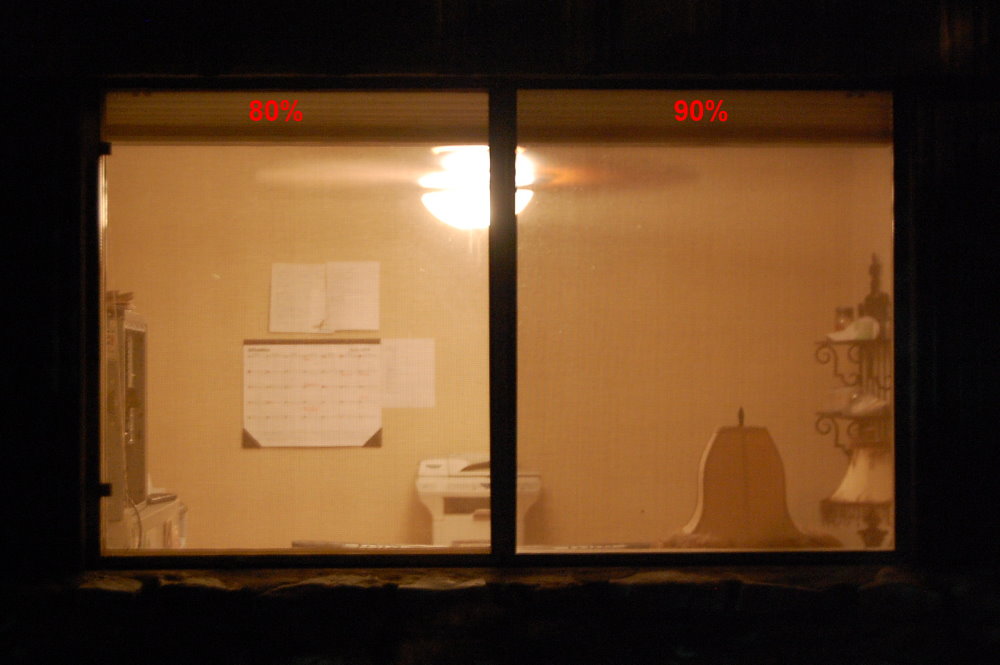
Even a 99% solar shade fabric still does not give you privacy. I address here on this page 99% solar shade fabrics. 99% solar shade fabrics are only used for roller shades. We could make solar window screens out of the 99% fabric, but the cost would be extraordinary. The cost would be extremely high. That 99% fabric is very costly. 99% solar shade fabric is about five times the cost of the 90% fabric. And even then you couldn’t get total evening privacy out of the 99% fabric. Visit this 99% solar screen roller shade fabric page to see daytime and evening photos.
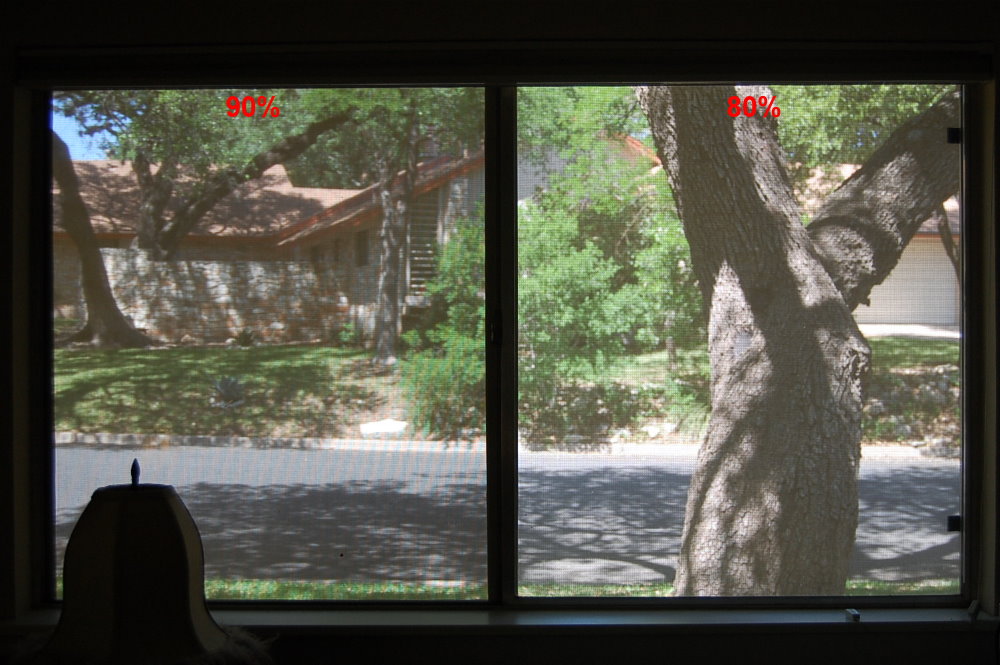
You can see out of this 80% solar screen fabric flawlessly. Looking through that 90% solar screen fabric does make your outward Vision a bit grainy.
Looking through that 90% solar screen fabric you’re only looking through 10% openness. Versus looking through 80% where you’re looking through 20% openness.
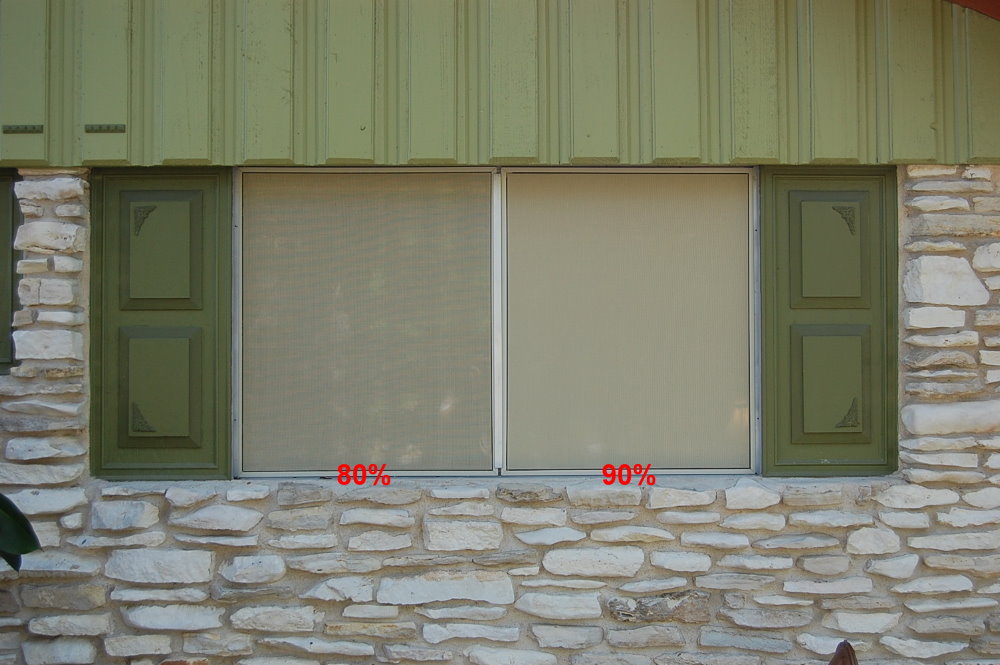
Comparison of installed 80% solar screens next to 90% solar screens.
These are some great photos that show what it looks like to have 80% 90% solar screens next to each other.

For both of these pictures, you have two density of solar screens.
When homeowners do not have blinds on their windows, they sometimes want to use 90%. Then when they have blinds on their windows they want to use the 80%. That’s the case with both of these pictures.
Both of these pictures have 90% solar screens for the non-opening windows. And 80% solar screens for the opening windows.
Opening Windows will always have blinds on the windows.
Personally, I think it looks best to have just 90% on all of them. Or 80% on all of them. But there are those homeowners that are okay with this look.
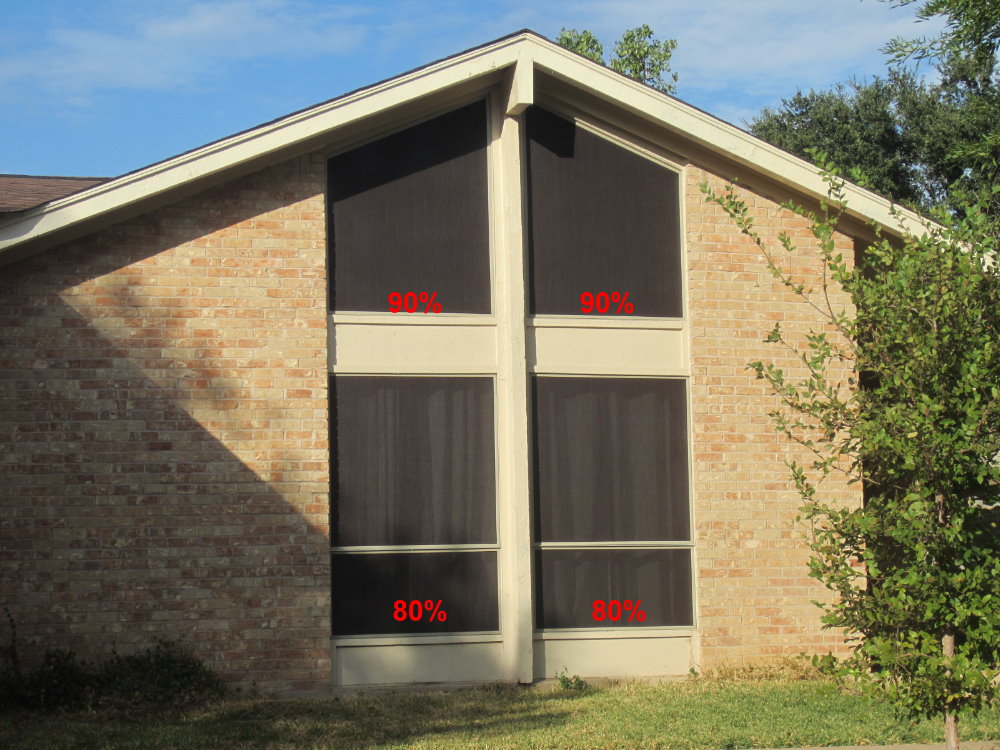
Shade comparison for 90% and 80% solar screen fabrics.
A great way to see how much shade the 90% vs 80% solar screen fabrics lend is to look at these pictures.
These pictures show four things. These pictures show a 100% shade, 90% shade, 80% shade and 0% shade.
And, these pictures are great because they show shade across multiple surfaces. We show shade against a cement driveway. And we show shade against a rough surface, yard grass.

How much shade will I get from solar screens?
Customers quite commonly ask us how much shade they will get from solar screens.
These pictures are a perfect way to visually answer that question.
You see there by the 100% shade what total shade looks like. Then you get to see the difference from 80% to 90%. And, what’s great is you get to see 0% shade. So you can see the transition from 0% to 80% to 90% up to 100%.
This is just an awesome true reference. An accurate representation.

Does it look odd to have different shades of screens on the same side of my home?
It can if you have them right next to each other. Take a look at some of the above pictures to see what I’m talking about. However, if you want to put 90% screens on some windows and 80% on others. And these windows aren’t right next to each other just like what’s shown in these pictures. You can get away with it.
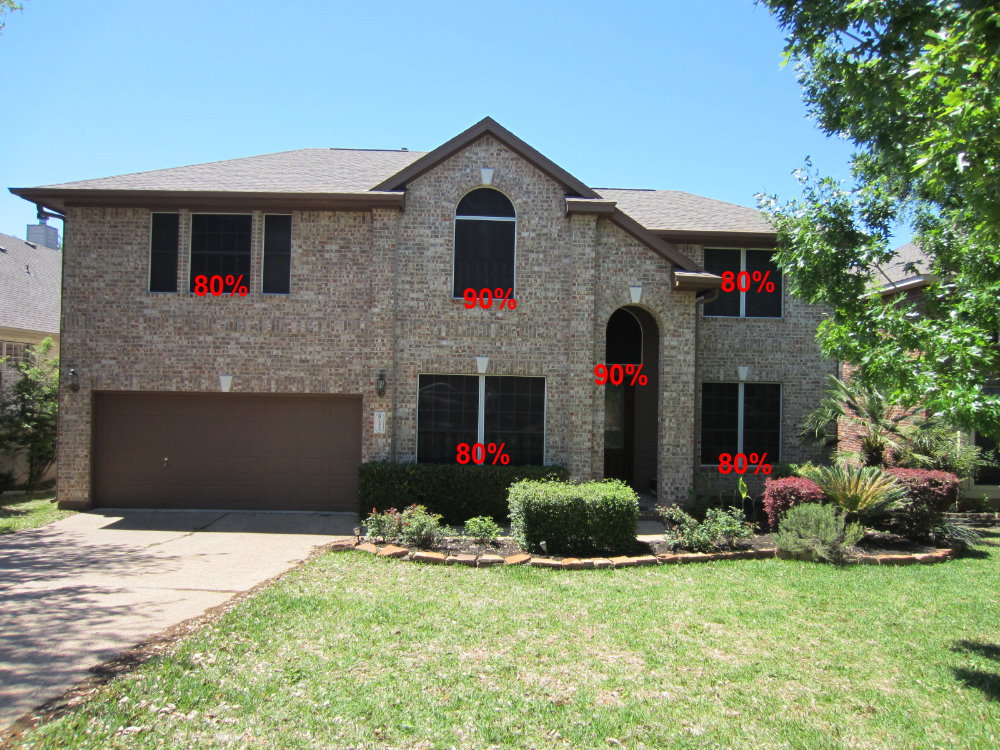
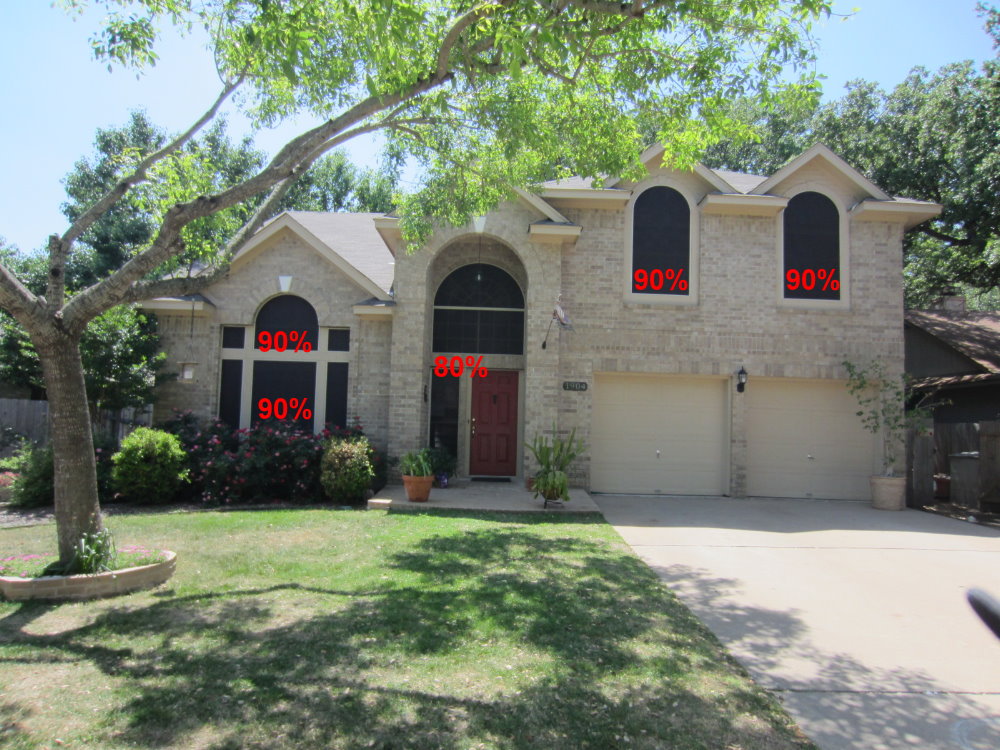
Comparing 0% shade, 80% shade, and a 100% shade.
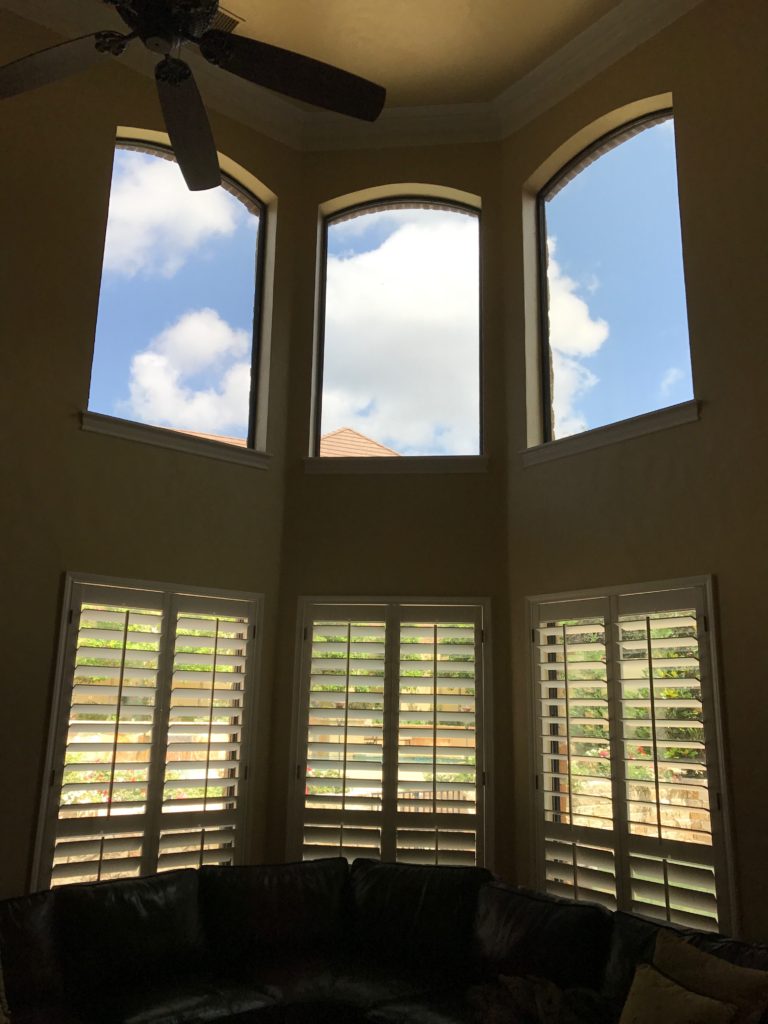
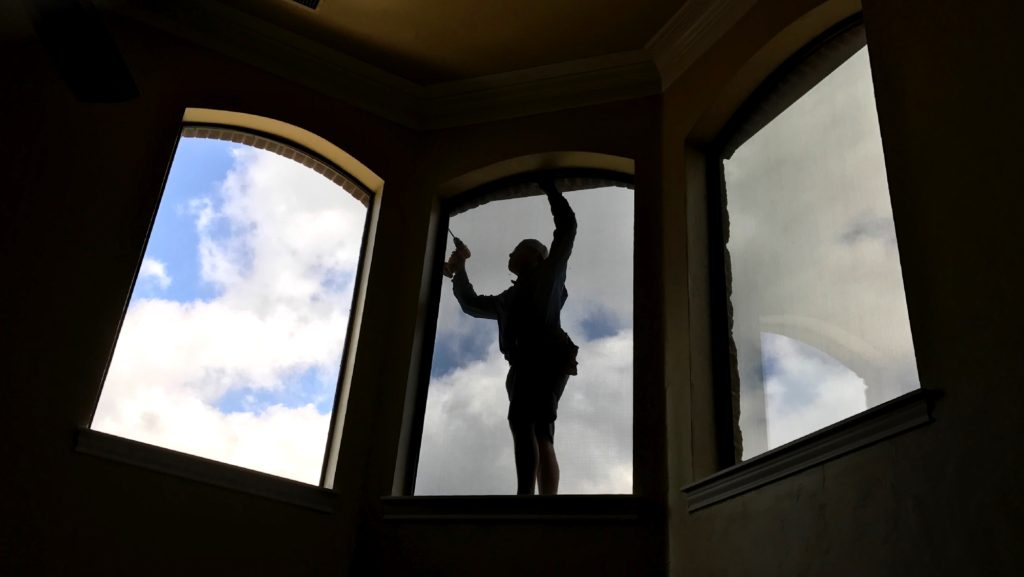
So a great way to look at this picture above is to see it in three perspectives. The first being the window to the left has 0% shade. The second being the middle window and the right window are shaded with 80% shade. Then, you see my helper there, he is providing a hundred percent shade.
It’s an interesting way to look at this picture through that lens. This way you get to see all perspectives, no shade, 80% shade, and 100% shade.
People are always worried that if they get solar screens, that they are going to block out almost all the light. Blackening out their Windows would be that hundred percent shade. That would be blocking out all the light.
As you can see by this picture 80% solar screens allows for a great amount of filtered sunlight to get in.
Looking out and looking in through 80% solar screens.
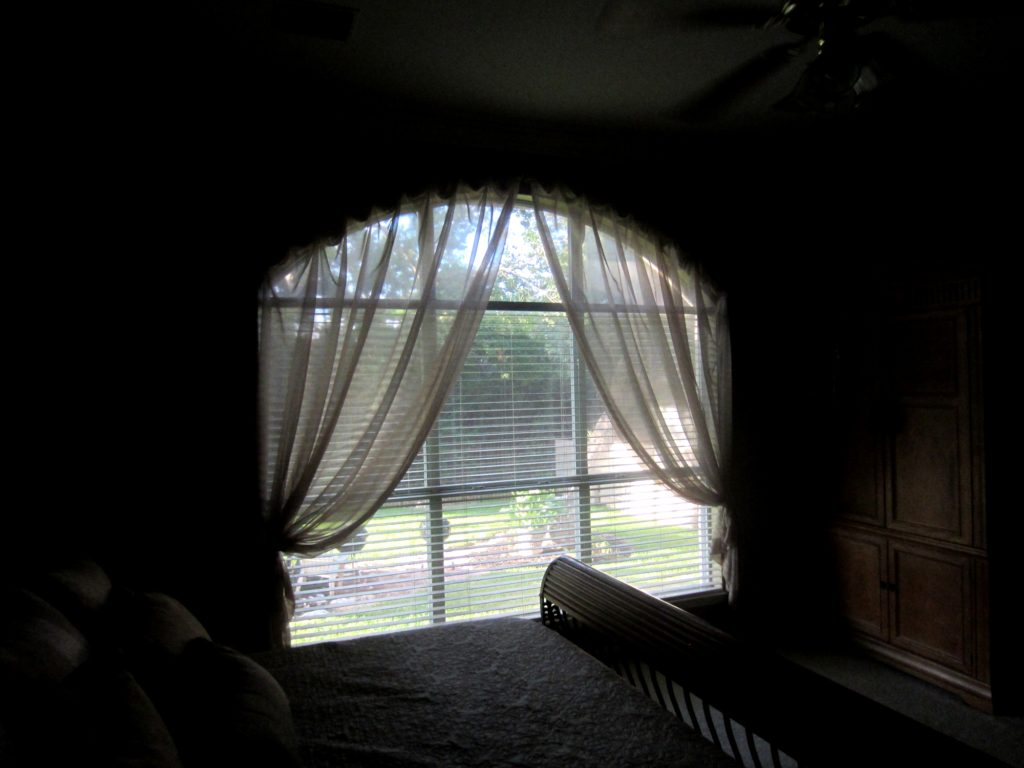
This is a great perspective showing what it looks like looking out the 80% solar screens. Now, at this time when this picture was taken, the sun was on the other side of the home. The sun is the brightest on the other side of the home. Weather these solar screens are on or not, this room would still have been shaded. The room appears a little dark. The room would have been dark anyway because the sun is on the other side of the house.
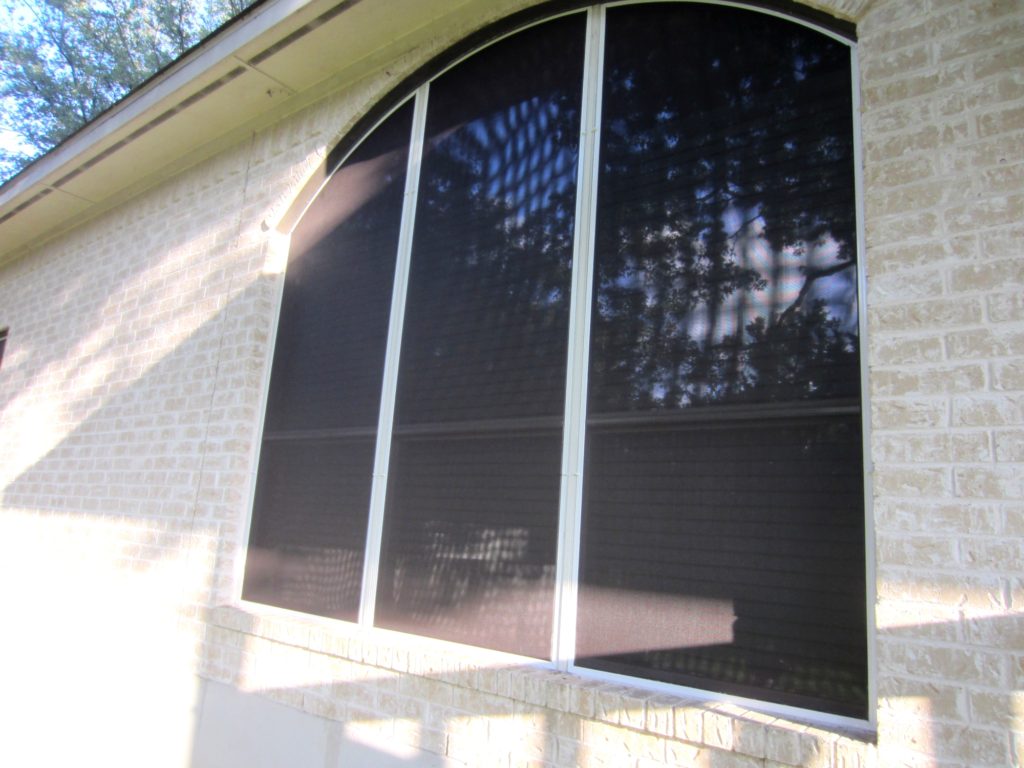
Do you make your patio roller Shades out of 80% solar screen fabric?
No, we only make our exterior patio roller shades out of our 90% and above solar screen shade fabrics. The reason is when people want shade for their patios, it is because our patios get an extreme amount of sun. That being the case, they always want the densest darkest fabric they can get.
